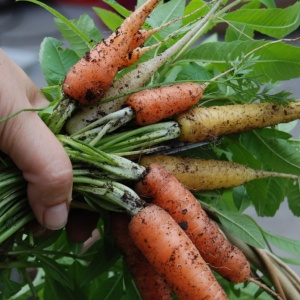
This paper describes four scenarios that reflect ways in which the food system might change in the near future, based on two main factors: dietary shifts and degree of globalisation. The paper suggests that such scenario analyses can be helpful in envisaging future paths beyond “business as usual”, even when the future of the food system is non-linear and hard to predict.
The paper first notes the need for “systemic transformation of the food system”, pointing to the current environmental and health impacts produced by the food system, including climate impacts, soil degradation, biodiversity loss, hunger and diet-related non-communicable diseases.
It then points out that predicting the future of the food system is difficult for several reasons: change can be complex and non-linear; unexpected or unlikely events can trigger a whole series of events; and the interconnected nature of the food system means that changes can rapidly cascade through multiple sectors and locations.
The paper then identifies two main drivers of the food system:
- Dietary shifts: due to the high degree of overlap between healthy and sustainable diets (i.e. having fewer calories and being heavily plant-based), this paper chooses to address the two dimensions together.
- Globalisation versus regional or local food systems. Over the past five years, the paper notes, there has been a rise in “inward‐looking and protectionist policies driven by increasing global inequality, including migration”.
Taken together, these two main driving factors can lead to four different scenarios, as shown in the figure below. The paper briefly outlines how each scenario might play out.

Abstract
The food system was developed around a set of policy drivers to make food cheaper and more available, these included promoting agricultural productivity and global trade to increase the availability of food. However, as has been recognised by a plethora of recent papers and reports, these factors have also led to a food system that is unsustainable through its impacts on human health (particularly the growing obesity epidemic) and the environment (e.g. as a major driver of climate change). The world is changing at an unprecedented rate, and the food system is becoming increasingly ‘just in time’, spatially extended, and dependent on more facilitating sectors (water, land, transport, finance, cyber, etc.). This produces a degree of systemic fragility that drivers (like demand) can interact with events (e.g. a climate impact) to create the opportunity for large‐scale shifts in the way the world works. Given the unsustainability of the food system, and the uncertainty of how it may evolve, scenario analysis can be a useful tool for imagining plausible futures as an aid to unlocking ‘business as unusual’ thinking. Summarising a number of recent processes, I describe scenarios of countries’ food systems shaped by changing patterns of trade and changing dietary patterns.
Reference
Benton, T. G. (2019). Using scenario analyses to address the future of food. EFSA Journal, 17(S1), e170703.
Read the full paper here. See also the Foodsource resource What are food systems?







Post a new comment »